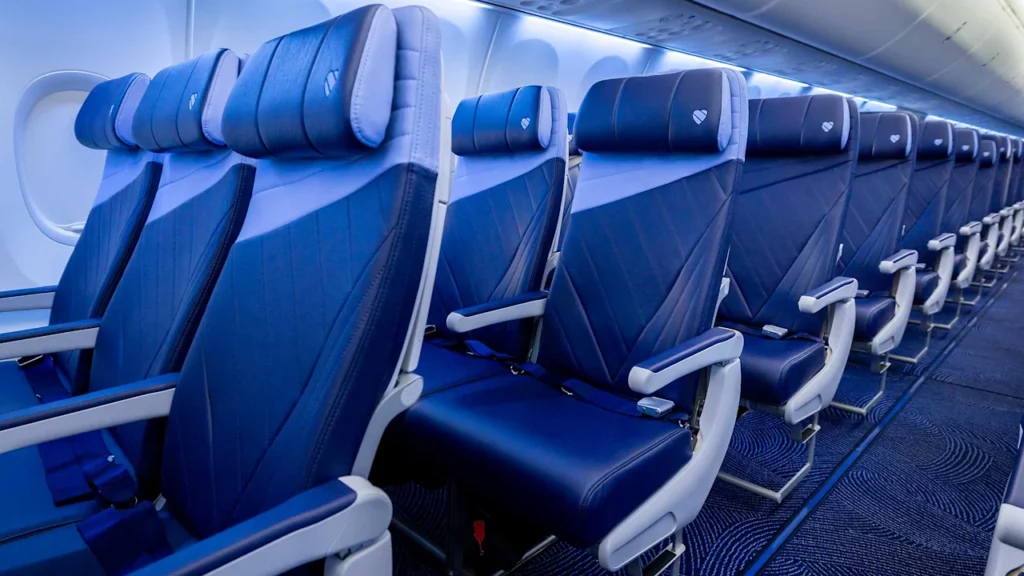
This month, Southwest Airlines unveiled a new cabin design that’s already rolling out in new planes across its fleet. It includes slimmer seats, updated amenities, and lots and lots of blue.
The new cabin was revealed on October 14, and there are currently six aircrafts in operation with the revamped design. For Southwest, this design is part of what it calls a larger “transformational plan.” So far, that plan has included nixing some of its most iconic brand features—like its “bags fly free” policy and flat cost open seating arrangement—in order to compete in an airline industry that’s increasingly reliant on charging ancillary, “premium” fees to drive up profits.
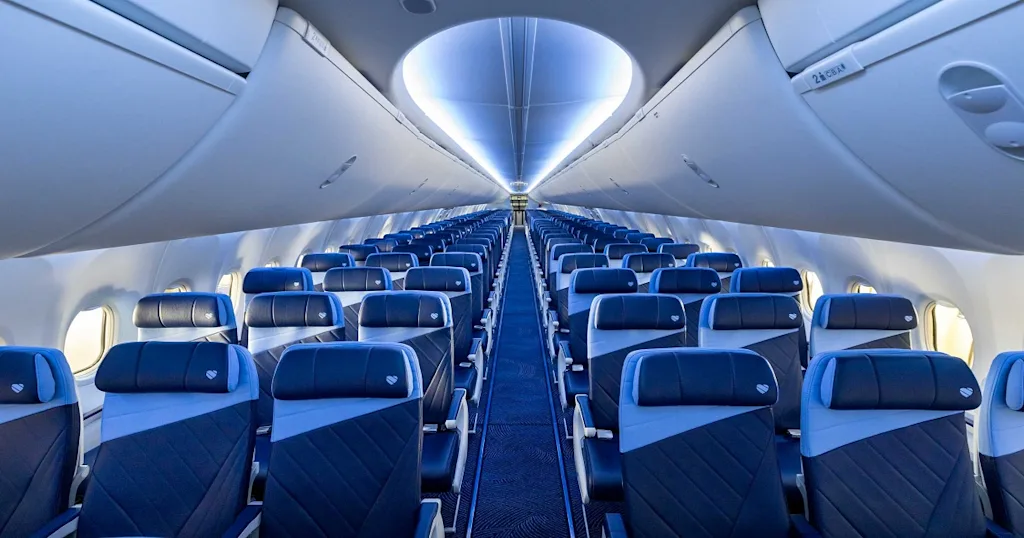
Starting in January 2026, Southwest will offer a new, pricier seating option that comes with extended leg room (ELR). These ELR seats are expected to take up one-third of each aircraft’s total seating—and in order to implement the new tiered assigned seating process, the airline is replacing seating across its fleet. In the coming months, every new aircraft that Southwest receives from Boeing will be fitted with the fully updated cabin, while older planes will be retrofitted with new seats.
According to Julia Melle, Southwest’s director of brand and content, the new cabin design is intended to offer new experiences for a broadening “affluent” consumer base, while still keeping core customers in mind.
“After the pandemic, we took a look at the data, and there is a more affluent audience that is growing across the category,” Melle says. “We wanted to be able to make sure we offered our core customers and an affluent customer more choices than ever before, and that includes an elevated experience within our cabin.”
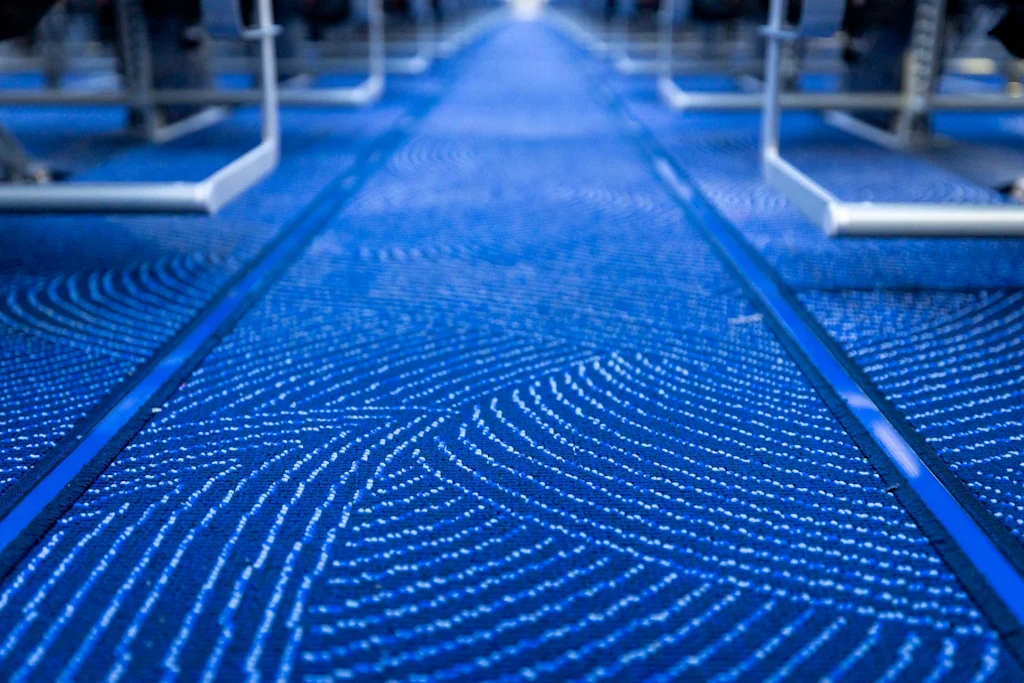
A very blue cabin design
The main change that guests might notice when they enter an updated Southwest cabin is a whole lot of blue.
Throughout the customer research process, Melle says, her team found that passengers are primarily looking for a “calming, relaxing, and friendly environment.” To achieve that, the design team filled the cabin with an array of complimentary blue tones, from sky blue on the headrests to navy blue on the seats and a swirling, atmospheric blue on the carpet. Even the lighting scheme has been adjusted to all-blue tones.
“We had a red that would appear at a certain portion of the flight along with the blues, and now it’s a completely a blue color scheme,” Melle says. She adds that the new lighting system also has fewer options available, simplifying the process for flight crew when they’re selecting a light setting for takeoff, cruising, and landing.
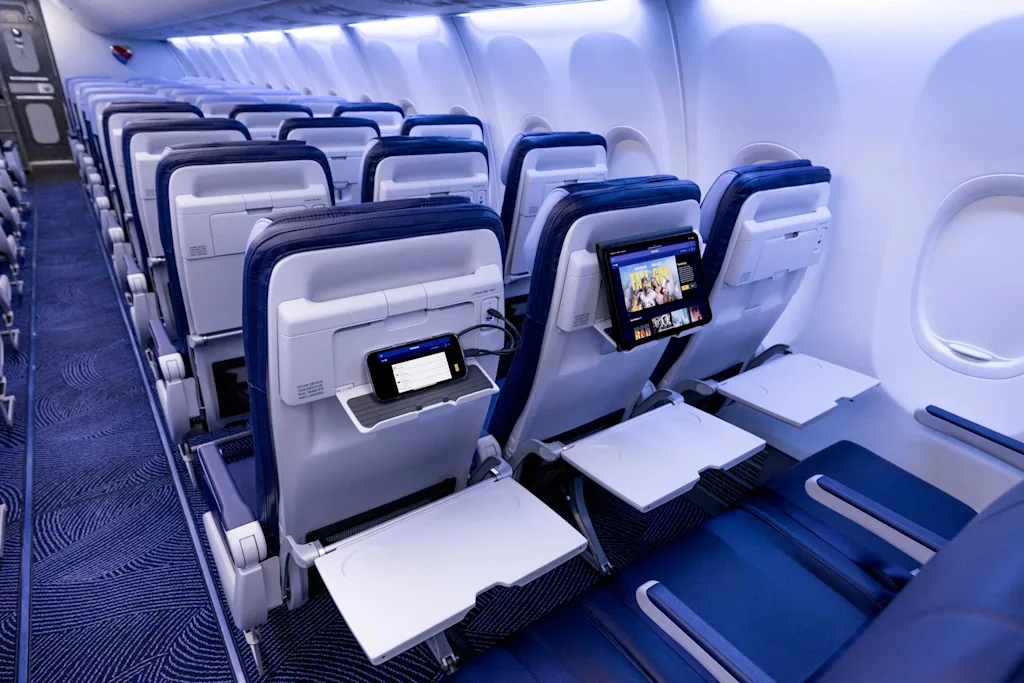
A slimmer seat
Southwest’s new seats are a model designed by Recaro Aircraft Seating, which faced some backlash earlier this year when internet critics nicknamed them the “Ozempic seat” for their skinny profiles. Melle says the seats are engineered for “maximum comfort” through customer feedback and product testing, from the way they “maximize seat width” to the specific upholstery material. Each seat comes with a personal electronic device holder on the back and a headrest that can be adjusted up and down or folded in toward the face.
The new ELR seats will offer up to five inches of additional pitch for passengers to stretch out, while the seating redesign will maintain a standard seat pitch for those in economy, according to a Southwest spokesperson. To make this work in older planes, Southwest is removing six seats from its Boeing 737-700 aircraft. Boeing MAX 8 and 737-800 planes will keep the same number of seats.
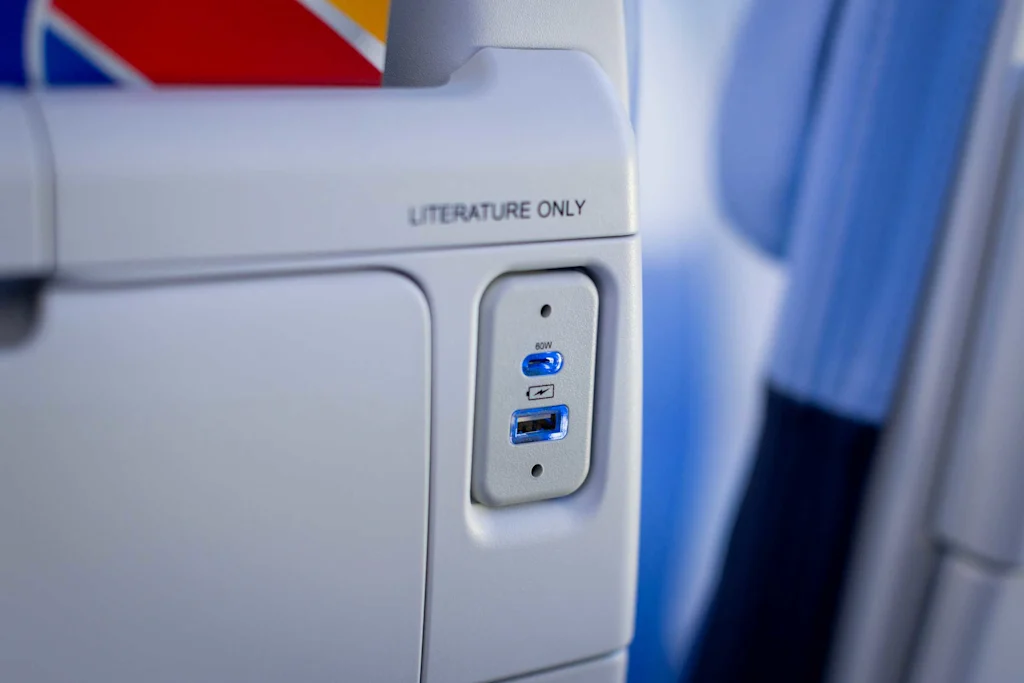
In addition to these aesthetic changes, the new cabins also include larger overhead bins, an added cupholder on tray tables, and USB-A and USB-C port on each seatback. And, for passengers sitting in the ELR tier, Southwest will now serve an exclusive new snack of either honey roasted or salted pistachios (luxurious!).
Overall, the updated cabin isn’t exactly reinventing the wheel. Still, for Southwest, customer reactions to the design will serve as a crucial data point for the reception of the airline’s broader brand transformation.